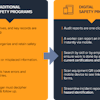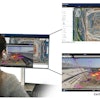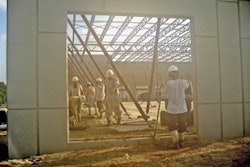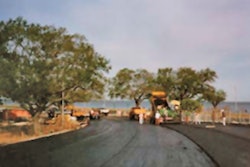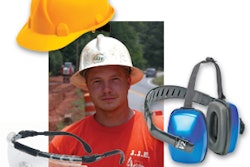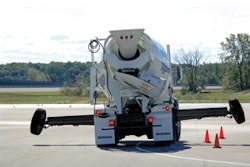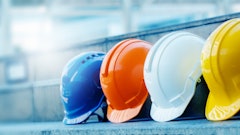Performing construction work alongside roads, highways and interstates is a safety challenge even under the best of circumstances. Unless lanes are completely closed, crews are continually exposed to traffic moving through work zones, often at high rates of speed.
As U.S. roadways become more congested, the risks are increasing. According to the Federal Highway Administration (FHA), the seven-year period ending in 2004 saw a nearly 50% increase in work zone fatalities. In 2004 alone, there were an estimated 1,068 fatalities on these sites. And while 80% of the fatalities involved motorists, construction workers and other employees laboring in work zones made up the remaining victims.
Add nighttime operations into the mix, and the safety challenges can become daunting. Yet, more and more projects are stipulating at least some night operations to minimize traffic disruptions during peak hours. This has raised further concerns over how best to protect workers on these projects.
"Most road construction workers have very legitimate concerns about their safety because of the danger associated with nighttime construction work," stated Brian Holmes, executive director of the Maryland Highway Contractors Association, during a National Work Zone Awareness Week event in Washington, DC. "Reduced visibility, motorist fatigue and greater exposure to drunk and drugged driving are just some of the major hazards facing workers at night."
In an effort to help mitigate such hazards, the American Road and Transportation Builders Association's Transportation Development Foundation has produced and manages the National Work Zone Safety Clearinghouse. The Clearinghouse contains an extensive on-line library featuring a Roadway Safety Training program and other materials for training and educating workers on safety issues. You can access the site at http://wzsafety.tamu.edu.
The Occupational Safety & Health Administration also offers a number of resources centered on the health and safety of construction employees and others operating in highway work zones. Just visit its dedicated web site covering Highway Work Zones and Signs, Signals and Barricades at www.osha.gov/doc/highway_workzones/index.html.
But before you do, check out our Roadbuilding section starting on p. 41, which includes an article on how L.L. Pelling of Eastern Iowa is working to address both safety and productivity concerns during reconstruction of Interstates 80 and 380. Additional articles on various work zone safety topics can be found on our web site at www.ForConstructionPros.com.
And because safety is so crucial to all aspects of construction, we have included our annual Construction Zone Safety guide with this issue. Within its pages, you'll find a number of articles to help you to improve jobsite safety, whether you're working along the interstate or in someone's backyard.
